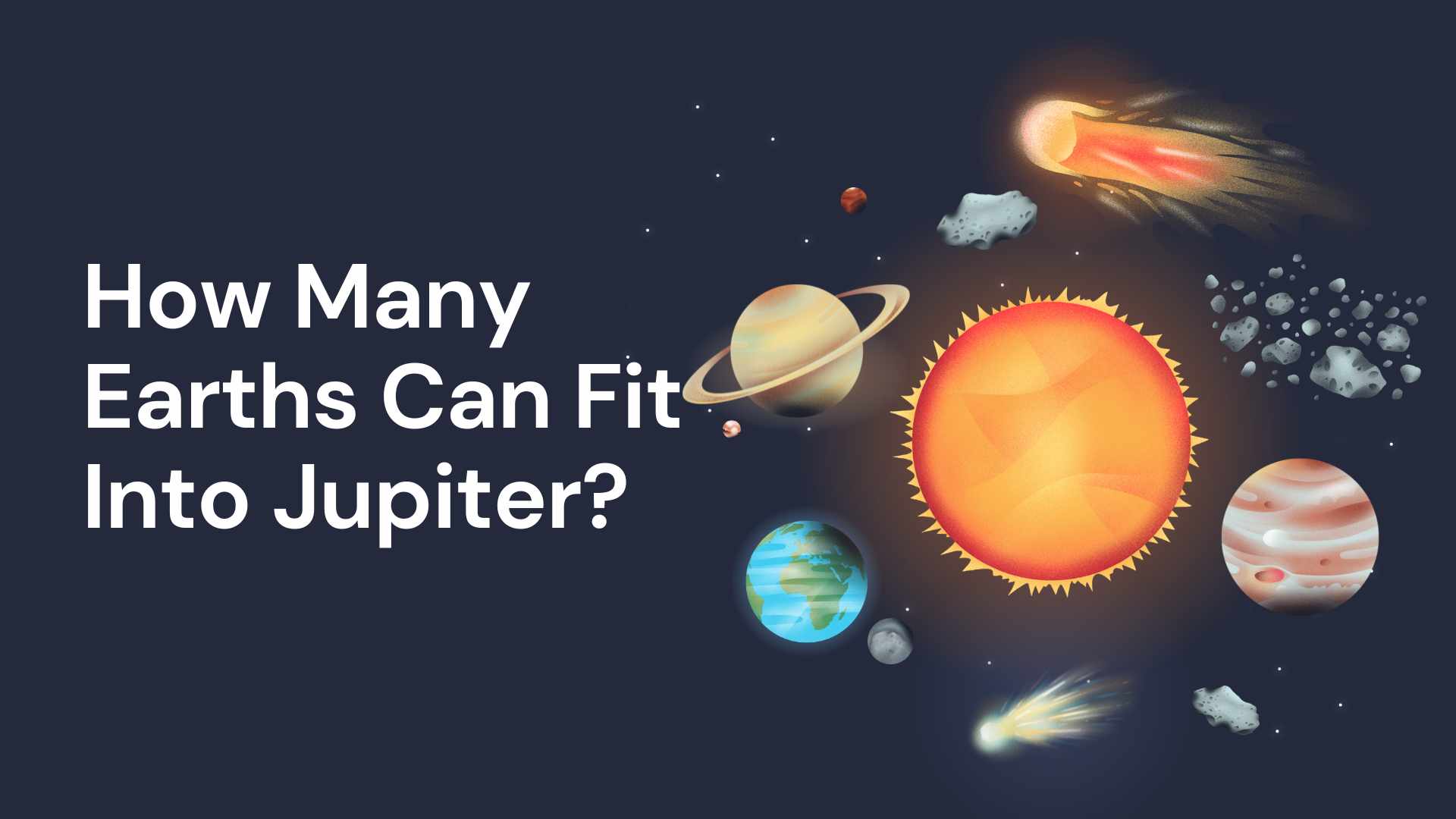Introduction
Have you ever wondered about the sheer magnitude of our solar system’s largest planet, Jupiter? The immense size and mysteries surrounding this gas giant have intrigued scientists and stargazers alike. In this article, we delve into the captivating question: How many Earths can fit into Jupiter?
Jupiter’s Size and Composition
Jupiter is a colossal giant, dominating the solar system with its impressive size. Composed mainly of hydrogen and helium, this gas giant boasts a diameter of approximately 86,881 miles (139,822 kilometers). Its immense volume and unique atmospheric composition set it apart in our cosmic neighborhood.
Earth’s Size in Comparison
To grasp the enormity of Jupiter, let’s first consider the size of our home planet. Earth, with a diameter of about 7,917 miles (12,742 kilometers), appears minuscule compared to Jupiter. The sheer scale of these celestial bodies sparks curiosity about the actual numerical relationship between the two.
Calculating the Number of Earths in Jupiter
To determine how many Earths can fit into Jupiter, scientists employ a straightforward yet fascinating calculation involving volume. Given Jupiter’s volume of approximately 1.43 trillion cubic kilometers, and Earth’s volume being around 1 trillion cubic kilometers, the answer is staggering. Over a thousand Earths could comfortably fit within the boundaries of this gas giant.
Jupiter’s Immense Gravity
The colossal size of Jupiter isn’t just a numerical fascination; it also brings about an intense gravitational force. This force significantly influences the planet’s composition, leading to its distinct features. Understanding Jupiter’s gravitational pull provides crucial insights into its formation and evolution.
Comparing Jupiter to Other Planets
While Jupiter is the largest planet in our solar system, it’s enlightening to compare it to other celestial bodies. Saturn, another gas giant, comes close, but Jupiter’s size remains unparalleled. This comparison highlights the unique characteristics that make Jupiter a cosmic giant.
Exploring Jupiter’s Moons
Jupiter’s size plays a pivotal role in its gravitational influence on its numerous moons. The interaction between Jupiter and its moons is a fascinating aspect of our solar system’s dynamics. The sheer mass of Jupiter is a driving force behind the complex dance of these celestial bodies.
Scientific Significance
Studying Jupiter’s size goes beyond mere astronomical curiosity. Scientists gain valuable insights into the formation of our solar system, the dynamics of gas giants, and the broader implications for our understanding of the universe. Jupiter, with its colossal size, serves as a cosmic laboratory for scientists to unravel the mysteries of planetary evolution.
Jupiter in the Night Sky
Even for amateur astronomers, Jupiter is a captivating sight in the night sky. Its brightness and visibility make it a prominent feature, and its study enhances our understanding of the movements and interactions of celestial bodies within our solar system.
Jupiter’s Role in the Solar System
Beyond its visual appeal, Jupiter plays a crucial role in the stability of our solar system. Its gravitational influence helps regulate the orbits of other planets, contributing to the overall harmony of our cosmic neighborhood.
Theoretical Explanations
Theories surrounding Jupiter’s formation provide additional layers to our understanding. The immense size of Jupiter raises questions about its role during the early stages of the solar system’s development. Exploring these theories adds depth to the narrative of our cosmic history.
Curiosity and Wonder
Jupiter’s colossal presence has captured human imagination for centuries. From ancient mythology to modern science fiction, the gas giant has been a source of inspiration and awe. Its size symbolizes the grandeur and mystery that our universe holds.
Challenges in Studying Jupiter
Despite technological advancements, studying a gas giant presents unique challenges. The lack of a solid surface and the extreme conditions pose hurdles for exploration. However, scientists continue to develop innovative methods to unravel the secrets hidden within Jupiter’s massive clouds.
Implications for Space Exploration
Understanding large celestial bodies like Jupiter is crucial for the future of space exploration. The knowledge gained from studying such giants contributes to our ability to navigate and explore the vastness of space. Jupiter’s significance extends beyond its immediate cosmic surroundings, influencing our approach to interplanetary exploration.
Conclusion
In conclusion, the question of how many Earths can fit into Jupiter unveils not only the numerical comparison but also the intricate interplay between size, gravity, and scientific exploration. Jupiter’s colossal size is a testament to the wonders that exist beyond our home planet. As we continue to gaze at the night sky, let Jupiter remind us of the vastness and complexity of our cosmic home.
Frequently Asked Questions (FAQs)
- Is Jupiter the largest planet in the solar system?
- Yes, Jupiter holds the title of the largest planet in our solar system.
- How does Jupiter’s size impact its moons?
- Jupiter’s size and gravitational pull influence the orbits and behaviors of its many moons.
- Why is studying Jupiter important for space exploration?
- Jupiter provides valuable insights into the formation of planetary systems, aiding our understanding of the universe.
- Can Jupiter’s size change over time?
- While its size remains relatively constant, Jupiter undergoes dynamic atmospheric changes.
- What is the best time to observe Jupiter in the night sky?
- Jupiter is most visible in the night sky when it is in opposition, which occurs approximately every 13 months.
